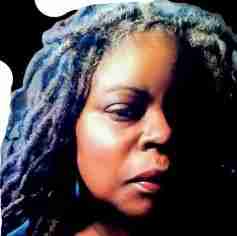The other day my beautiful cousin called to check on me. She and I have always had an interesting connection. We were born months apart. Me in November of 1967 and she in March 1968. We belong technically to two different generations. Her mother is my great aunt which would mean that we are second cousins. My cousin’s mother and my grandmother are sisters. Our crew is a close-knit family so my cousin and I were more like sisters, twins if anything. My aunt and my mother said that we had our own language and we communicated in a way no one else understood but us. Middle-aged with grown children and grandchildren, my cousin and I still have our own way of communicating that prompts thought and aspirations.
My cousin and her husband attended a funeral over the weekend in Memphis, Tenn. They visited the Lorraine Motel, site of the assassination of the Rev. Dr. Martin Luther King, Jr. on April 4, 1968. She told me of how the Lorraine (now a museum) was transformed or frozen in time to provide a snapshot of what the world looked like the day and moment King was killed.
Across the street from the motel and part of the National Civil Rights Museum is the Legacy House, the former Bessie Brewer boarding house in which killer James Earl Ray rented a room to stalk and murder King. As I listened intently to my cousin describe feelings of profound sadness mingled with an introspective lens, I could not help but be fascinated by her perspective on the trajectory of Black America since that day in 1968. As we close the month of February and Black History Month until another calendar year, I am even more cognizant as I write this of the challenges we still face and must overcome. Our celebration of Blackness is ongoing 365, and we honor ancestor and scholar Dr. Carter G. Woodson by continuing his legacy of never forgetting the contributions that scores of African-descended DNA have made in this country.
However, in our familiarity with the life work and accomplishments of Dr. King, we somehow have lost the significance of what occurred on that balcony at the Lorraine Motel on April 8, 1968. The symbolism of his murder is plain: The forces of the myth of White supremacy, fearful of the potential power of Blackness, attempts to counter through brute force and violence. This is the ongoing saga between the proverbial us and them. That is the “why” beneath the assassinations of Medgar Evers, the four girls murdered in the Birmingham church bombing in 1963 (Say their names: Addie Mae Collins, Carol Denise McNair, Carol Rosamond Robertson, and Cynthia Dionne Wesley), El Hajj Malik Shabazz, also known as Malcolm X, James Chaney, Michael Schwerner, and Andrew Goodman (the three Civil Rights Movement activists in Mississippi to help register Black voters in 1964), and Harry T. and Harriett Moore, schoolteachers and NAACP officials who helped to register Black Floridians to vote – until bomb was placed under their bed on Christmas 1951 in Mims, Fla.
So many more Black Americans were lynched or shot and killed to further the myth of White supremacy and thwart the acceleration of Black excellence. They go unsung or forgotten, caught under the grinding wheels of time or shushed away in the memories of ghosts. Yet we cannot continue to live our collective lives in this country without recognizing that our very existence comes at the steepest of costs. Goosebumps appeared on my arms as my private thoughts collided with the oration of my cousin. She was reflecting on the travesty of what Black America has become 55 years after the death of Dr. King. Our young people lack the knowledge of self and the will to combat the insurgency of poisons that proliferate in our communities to enhance chaos and breed anarchy against those who wanted more for us as people. The struggle in our cities to simply just be, to survive, is threatened by outside forces and internal ones. Black men and Black women fight against one another instead of building a theocracy on earth. Our music and the messages intertwined in it are ones of misogyny, violence, substance abuse. Sexualized lyrics are pumped into the airwaves ad nauseum, subliminally telegraphing self-destruction instead of Black renewal.
While we fight for our historical contributions to be acknowledged, celebrated, and taught in our public school systems, and rage against racism in its many forms, governmental and otherwise, we have to reframe how we see ourselves. We cannot reframe our story based on the perception of White America and the ideology of those such as Dilbert creator Scott Adams, whose racist rant featured the misinformation that according to a poll, more than 50 percent of Blacks dislike White Americans and should be considered a hate group. We are the surviving DNA of the Transatlantic Slave Trade. That means something. My cousin and I reminisced about our family and somehow the unspoken language between us was loud and clear: We each are on a journey and our goals are intersectional. We both are working toward the power and betterment of our culture and we believe in the upliftment of our people. As March swiftly enters the discussion, and we move into Women’s History Month, we will celebrate the Black women who have made herstory in our family, and continue to make our own history, because one day in the future we want our legacies to inspire new generations as the legacy of our ancestors, sung and unsung, inspires us.










No Comment